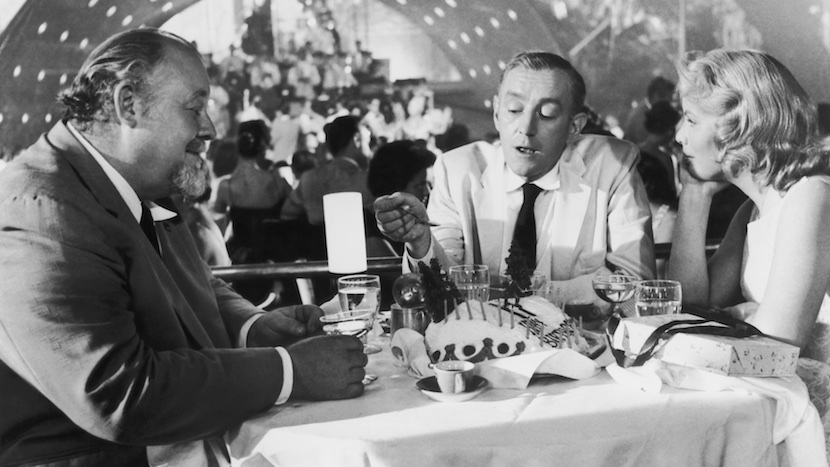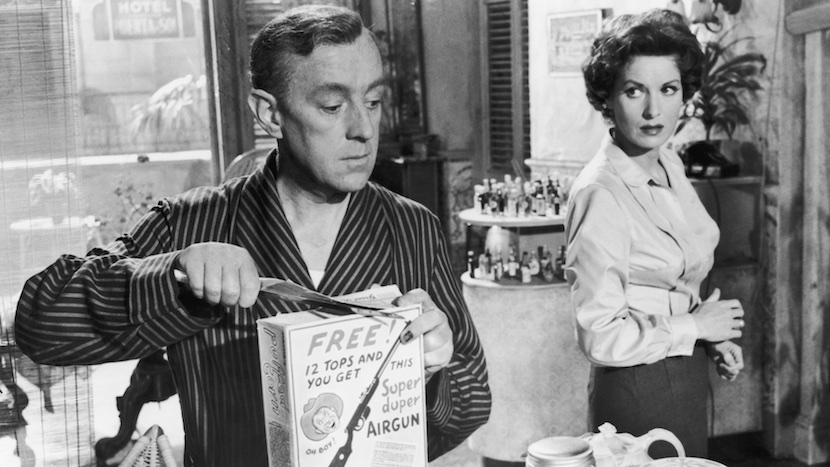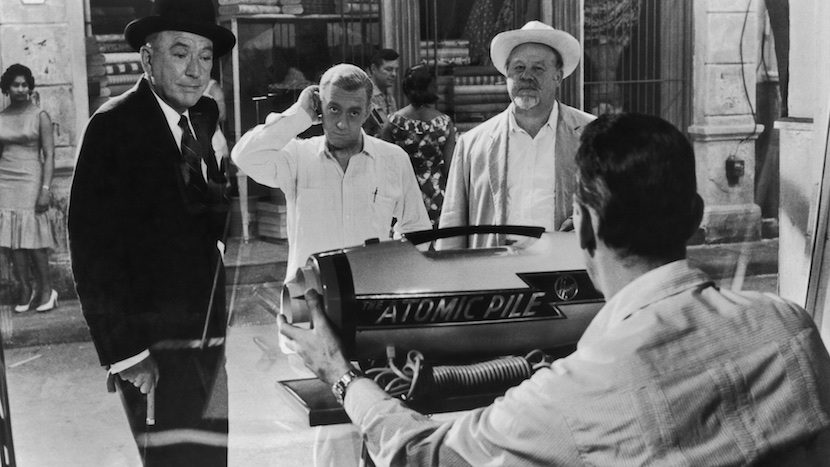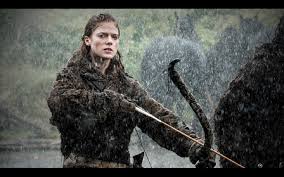Fresh, refreshing and complex, are the first few words that come to mind whilst viewing the recently restored production of 'Our Man in Havana'.
Sony Pictures' 4K digital restoration of this original Carol Reed (director) and Graham Greene (writer) 1959 collaboration, just months after Castro had overthrown Batista, is a Cinematic treat.
Both visually as an experience on the big screen, but also in terms of its layered exposition of Cuba's (or in this case Havana's) social setting at the time, it offers food for thought on numerous levels.
The setting is beautifully presented through use of wide shots of the backdrop of Havana, it's nightlife and club scenes, as well as it's street energy and colourful inhabitants.

The music lends itself to this dual atmosphere of happy go lucky 'joie de vivre' at the same time as a menacing threat of crime and death.
We find a band of musicians following a few characters around, and appearing at the drop of a hat out of no where, to surround them with loud energetic Cuban music, symbolizing this split in the daily life of Havana during those times. We see here a pretense of joy, coating the underlying reality of corruption, which the characters navigate through, whilst surrounded by music, dancing and alcohol.
Dancing is provided by the beautiful women in the clubs, whilst Daiquiris -the protagonist's favourite drink (main character played by Alec Guinness)- among other drinks such as whiskey, are offered and drunk continuously at bars and meals and homes throughout the film.
Drinks even figure in a chess game as the pawns or the means to an end, as well as possibly carrying poisons and affecting the lives of the 'players' in more than one way. We have killer drinks, threatening drinks, drinks as tools to get to an end result or simply to numb any pain.
A very effective image of a Daiquiri glass, presented to an Alec Guinness turning away from it just seconds after he orders it, is very telling of the role of alcohol both in the film and in Cuba at the time. No prohibition there, and as one of the characters says: nothing is illegal in Cuba where drinks can be taken for granted.A dig here at how any forced prohibition can cause a reaction in people.
This idea of 'anything goes', is emphasized through the objectification of women in the film, as semi naked dancers, strippers, and call girls.
One particular silent woman appears everywhere and often in the background throughout, and even with her back to us at times, she pops up as the representation of forbidden fruit made accessible to all men.
She is in fact in the opening sequence as the credits roll, standing at a balcony in a very inviting but unhappy way, as a man looks up at her. This still shot of her then restarts with actions once the film begins and the first credits end.
This cinematic ploy portrays a continuous or ever present offer of women who are openly sold to men in Havana at the time.
Money, as a commodity is much needed, as we learn from the way the main character Alec will do just about anything to get his doe eyed, pretty daughter the fleeting things she wants to own in life.
Thus, the themes of crime and corruption are presented to us throughout but with an attractive coating of fun and joyful gaiety,
Underneath all the glitz and glamour, we find drunkenness, prostitution, greed and crime as inherent parts of the existing Cuban society, inherited from Batista by Castro at the time.
The film is loaded with complex symbolic images reflecting the themes of crime and corruption but also of love, and of the utility or lack of, of the 'policing' agencies at the time.

American and British intelligence are portrayed comically in how futile they appear to be. They seem to be organisations filled with bumbling characters, who can easily confuse a vacuum cleaner with a bombing device and who for instance don't seem to know the difference between what carries sound and what doesn't. In one scene, an agent closes a hole ridden gate door in order to give himself and Alec privacy, when in fact said door he shuts is more like an open window whether it be closed or open. This latter analogy is a hint at the 'leaks' or holes in the secret services as institutions; i.e: when you think they are secure and safe, they actually are transparent and not so at all.

The recurring and funny play on words in dialogue, gives beautiful touches to the film, adding folds to the cleverness of the script and how it takes us into the convoluted but almost ridiculous world or secret services. For instance: 'creates a vacuum in' or 'a clean sweep of', here refer to Alec's cover job as a vacuum salesman, whilst the conversation which takes place is in fact about the actions or plans of the secret service.
There is a mention of pan American airlines giving out fading orchids to people, as a stab perhaps at the fading or superficial power of US influence at the time.
From a totally different perspective, we notice a British Airways flight race across the skies, and we perhaps wonder at advertising for the film at the time of the making of the movie.
But coming back to this idea of a fading or non consequential US influence, we see this repeated in an image of a pharmacy sign in a darkened street of Havana, where a close up of Alec allows the camera to shade the top of the word 'Farmacia' from the audience's view. We are thus left with: 'CIA' as a word in the backdrop.
We wonder as to whether this is a clever trick by Reed to show that such an intelligence agency is 'ill' or 'unwell' and needs medical or pharmaceutical attention.
Love is seen through cynical eyes in the film, with Beatrice (interesting choice of name reminiscent of Dante's Beatrice) tries to save Alec, firstly by splashing his daughter's unwanted male pursuant with water at a bar, and then through her caring for him and advice.
She is apparently married of sorts -in a way- to a man who hasn't come back, and the dialogue in the scenes where she explains it to Alec's daughter is exquisite.
In fact she explains her view of love beautifully when she says to Alec that her estranged husband was too confident about love and that in fact love is never that sure; that when in love, people are usually frightened to lose it.
A few gems like this one can be found in the script and dialogue, but then the whole story is gorgeously written.
The scenes in the male bathrooms where homosexuality is hinted at heavily, are both funny and serious at the same time, and riddled with meanings about relationships and identity.
Each character in the movie carries at least one strong message.
Other than Beatrice and her ideas about love, we also have the policeman character as a relaxed semi- corrupt officer, who gives us a pragmatic look at poverty and injustice, as he makes a few comments about torture not being for the rich, and as he hints at the poor being the recipients of all things unfair.
The daughter's character is intriguing as an innocent protected woman, but also as a 'chained' female in a world where the options for women are either: be sold or be bought. The image of her with the horse's harness around her neck is very telling. In this scene her father Alec gently places the harness protectively and lovingly around her as he promises her that she she can keep the horse he bought for her.
Finally, Alec, the main character with his humour and comic facial expressions, as the agent who isn't one at all but a simple vacuum cleaner sales man with talent and guts, is also one which presents us with the theme of the self fulfilling prophecy.
This is a very good device in the story and brings to mind the fact that often when we say that something fictional is real, even if we do not believe it is, it ends up being very real indeed.
Very existential.
There is even a mention of Science Fiction writing, which becomes an inherent part of the story of the hero. Writing is presented as a creative and almost positively manipulative tool, allowing the imagination to see and make believe whatever it wishes.
Alec's images as a writer end up convincing even the prime minister of something which in fact doesn't exist.
The message here is this: there is great power in words, writing, and images. They hold Truth, but also create fiction made to be reality, as is the case with film making.
A lovely painting of a film, with powerful themes and intelligent visual and verbal language.
The oldies are always full of these goodies which we scarcely find in other more recent film productions.
These kinds of authentic older films give the audience layer upon layer of messages and symbols to unravel.
This sense of mystery is attractive to the mind since -as the German doctor in the film hints at, although not in these particular words- secrets are always a good means to pull one in to any story.











